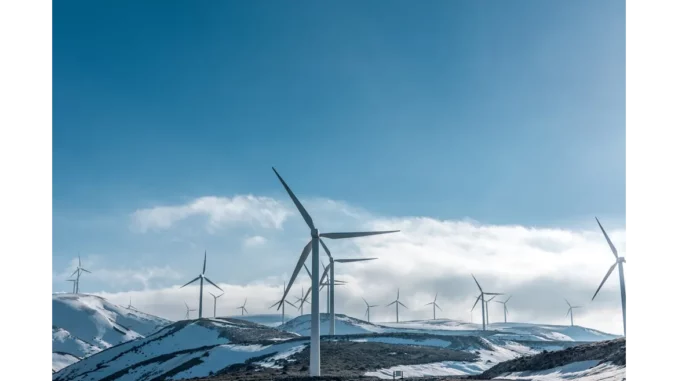
The United Kingdom stands on the cusp of a transformative era in the energy sector, propelled by a groundbreaking decision from the British Civil Aviation Authority (CAA). As of October 2024, the CAA has approved the deployment of drones for the monitoring of vital energy infrastructures, such as power lines and wind turbines. This regulatory milestone is poised to redefine operational dynamics within the energy industry, offering the promise of heightened efficiency, cost reductions, and enhanced safety measures.
Air quality is vital in planning. See how Focus360 Energy can assist.
The CAA’s decision to permit drones to operate beyond the visual line of sight (BVLOS) signifies a pivotal moment in the assimilation of drone technology into industrial applications. This progressive policy shift is especially relevant for the energy sector, which faces mounting pressure to manage intricate networks while embracing renewable energy sources. Traditionally, infrastructure inspections have been an arduous and expensive endeavour, often necessitating the physical presence of technicians in remote and potentially perilous locations. The integration of drones as a monitoring tool mitigates these challenges by enabling swift and secure inspections of hard-to-reach areas, including offshore wind farms, without requiring on-site human intervention.
The operational efficiencies derived from drone utilisation are substantial and multifaceted. Drones offer the capability for frequent, automated inspections, facilitating real-time monitoring of infrastructure health. In the aftermath of severe weather events, for instance, drones can rapidly assess power lines for damage, thereby expediting repairs and minimising service disruptions. This agility is vital for maintaining the reliability of the electrical grid and averting costly outages. In the context of wind energy, drones provide a cost-effective solution for routine maintenance checks, inspecting turbines without halting operations, which reduces downtime and associated expenses. Moreover, drones enhance safety by obviating the need for technicians to work at hazardous heights, thereby diminishing the risk of accidents.
However, the path to implementing BVLOS drone operations is not without obstacles. Ensuring reliable communication in remote locations, particularly for offshore structures, presents a significant challenge. Addressing this issue requires coordinated efforts between the CAA and energy companies to develop robust protocols that safeguard the safety and efficacy of drone operations. Additionally, the integration of drone-gathered data into existing infrastructure management systems demands considerable investment in IT infrastructure and personnel training. Companies must ensure that data is processed securely and efficiently to fully capitalise on the potential of drone technology.
The timing of the CAA’s decision aligns perfectly with the UK’s ambitious energy transition objectives, particularly the expansion of offshore wind energy capacity. Drones have the potential to play an instrumental role in this transition by conducting rapid and frequent inspections, thereby ensuring the reliability and longevity of renewable energy infrastructures. This not only maximises energy output but also reduces maintenance costs, enhancing the economic viability of renewable projects. Furthermore, drones can accelerate the development of new wind farms by aiding in feasibility studies and pre-construction inspections, thus speeding up the expansion of the UK’s renewable energy infrastructure in support of both national and international climate goals.
From a financial perspective, the adoption of drones for infrastructure monitoring offers substantial benefits to energy companies. By lowering operational costs and enhancing asset reliability, drones contribute to improved profitability. The increased operational time of wind turbines, for instance, directly translates into higher revenue generation. Additionally, the burgeoning demand for drone services is likely to spur innovation and growth within the sector, encouraging the development of new technologies and service providers. The UK’s leadership in integrating drones into the energy industry could also attract international investment and partnerships, positioning British companies at the forefront of global monitoring and maintenance technology markets.
The CAA’s innovative approach could potentially serve as a model for regulatory bodies worldwide, including the European Union Aviation Safety Agency (EASA) and the Federal Aviation Administration (FAA) in the United States. By showcasing the successful integration of drones into industrial operations, the UK could influence the harmonisation of international drone policies, boosting the global competitiveness of its energy sector. In the long term, the widespread adoption of drones for infrastructure monitoring could revolutionise practices across various industrial sectors, including transportation, construction, and natural resource management. This technological shift heralds a new era of industrial innovation, promising substantial efficiency gains and optimised resource utilisation. As the UK embarks on this new chapter, it sets a precedent for the world, illustrating the boundless possibilities of technological advancement in infrastructure management.


Be the first to comment